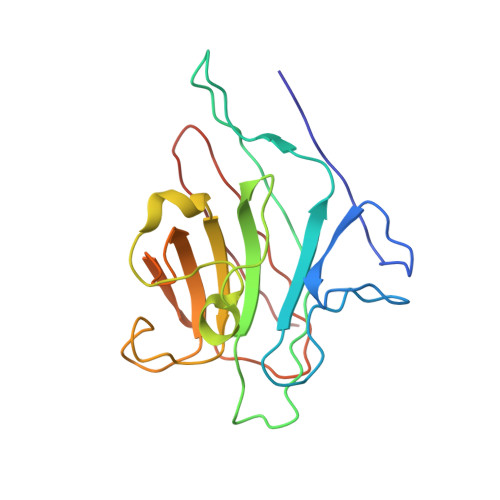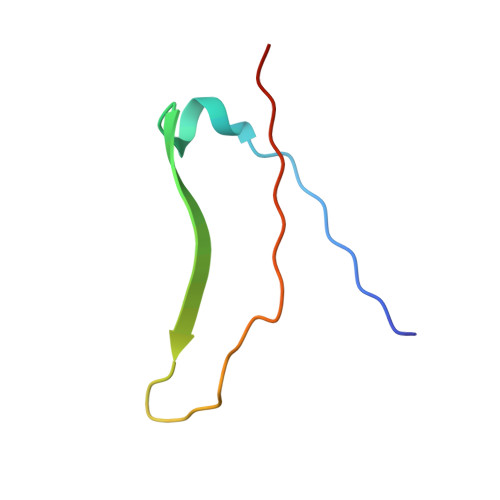X-ray crystal structure of a pea lectin-trimannoside complex at 2.6 A resolution.
Rini, J.M., Hardman, K.D., Einspahr, H., Suddath, F.L., Carver, J.P.(1993) J Biological Chem 268: 10126-10132
- PubMed: 8486683
- DOI: https://doi.org/10.2210/pdb1rin/pdb
- Primary Citation of Related Structures:
1RIN - PubMed Abstract:
The x-ray crystal structure of pea lectin, in complex with a methyl glycoside of the N-linked-type oligosaccharide trimannosyl core, methyl 3,6-di-O-(alpha-D-mannopyranosyl)-alpha-D-mannopyranoside, has been solved by molecular replacement and refined at 2.6-A resolution. The R factor is 0.183 for all data in the 8.0 to 2.6 A resolution range with an average atomic temperature factor of 26.1 A2. Strong electron density for a single mannose residue is found in the monosaccharide-binding site suggesting that the trisaccharide binds primarily through one of the terminal alpha-linked mannose residues. The complex is stabilized by hydrogen bonds involving the protein residues Asp-81, Gly-99, Asn-125, Ala-217, and Glu-218, and the carbohydrate oxygen atoms O3, O4, O5, and O6. In addition, the carbohydrate makes van der Waals contacts with the protein, involving Phe-123 in particular. These interactions are very similar to those found in the monosaccharide complexes with concanavalin A and isolectin 1 of Lathyrus ochrus, confirming the structural relatedness of this family of proteins. Comparison of the pea lectin complex with the unliganded pea lectin and concanavalin A structures indicates differences in the conformation and water structure of the unliganded binding sites of these two proteins. Furthermore, a correlation between the position of the carbohydrate oxygen atoms in the complex and the bound water molecules in the unliganded binding sites is found. Binding of the trimannose core through a single terminal monosaccharide residue strongly argues that an additional fucose-binding site is responsible for the high affinity pea lectin-oligosaccharide interactions.
- Department of Molecular and Medical Genetics, University of Toronto, Ontario, Canada.
Organizational Affiliation:




















